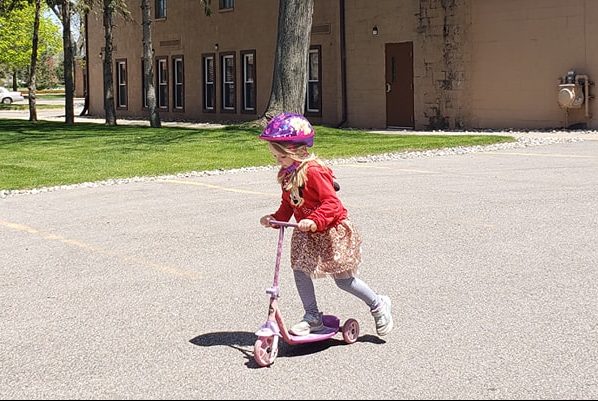Summer is a time for children to laugh, run, be carefree, and play outside; yet, inevitably summer is also a time when we see an increased number of pediatric injuries. Let’s take a look at some common summer injuries, ways you can prevent them, and what to do if there is one.
Bicycle Injuries
Young kids tend to fall off bikes pretty often, and that is extra scary when their heads are not properly protected. Children should always wear a helmet while riding a bike, scooter, or skateboard. According to the CDC, research has shown that helmets reduced overall head injuries by about 60 percent and reduced fatalities by about 73 percent. For added safety, children should always walk bikes through intersections. Also, make sure bicycle seats and handlebars are adjusted appropriately.
Minor head injuries can often be monitored at home. If you feel the injury was significant, your child is having persistent vomiting, or not acting like themselves, do not wait to seek medical attention.
Playground Injuries
Falling off play structures can lead to an array of injuries including abrasions, lacerations, sprains, fractures, and head injuries. Instruct children not to play on wet playground equipment. Look for playgrounds that have mulch, sand, or rubber surfaces to help provide cushion if they fall.
If your child sustains minor skin injuries, clean with soap and water, apply an antibiotic ointment and a bandaid if needed. For larger cuts, keep the wound clean and contact your pediatrician. Many times the pediatrician can repair the cut themselves. If they cannot, you may be referred to the emergency department. Give Motrin or Tylenol, apply ice, and elevate the extremity. However, if there is obvious deformity to the area or swelling that does not improve, seek medical attention.
Burn Injuries
Fireworks and bonfires can lead to burn injuries in children during the summer. Keep the ground around fire pits clear and instruct children not to run near an open fire. According to the CDC, “Every day, over 300 children ages 0 to 19 are treated in emergency rooms for burn-related injuries and two children die as a result of being burned.” Sparklers may seem fun for children, however, keep in mind that they can heat up to well over 1,000 degrees Fahrenheit and can lead to serious burn injuries. Glow sticks are a great alternative to sparklers.
Treatment for burns depends on the extent of the injury. If you have any concerns about a burn, speak to your child’s pediatrician or seek care in an emergency department. First degree burns turn the skin red, do not blister, and are similar to a sunburn. You will want to run cool water over the burn. Do not rub the area, do not apply ice, or pop the blister. You will need to cover it with a clean, dry dressing that will not stick to the site. Lastly, do not apply any creams, lotions, or other home remedies to the site; this can increase the risk of infection.
Water Injuries
Whether spending time at the pool or lake, children need constant supervision while in and around water. “Among those 1-14, fatal drowning remains the second-leading cause of unintentional injury-related death behind motor vehicle crashes,” according to theCDC. An adult certified in CPR should always be within “touch” distance of a child in the water, and the child should be wearing an approved floatation device.
Let’s break the myth on “dry drowning.” Drowning is not something that will happen days to weeks after being in the water. There is a misconception that swallowing water is drowning. Drowning happens when you are under water and the lungs are unable to receive oxygen. When a child swallows too much water into their stomach, some may go into their lungs. If there is a small amount, coughing will clear it from the lungs. If your child has trouble breathing, chest pain, or coughing after a water related incident, it is important to seek medical attention.
As parents, it is in our nature to protect our children, yet there are times accidents are inevitable. Being aware of the common type of summer pediatric injuries is the key to prevention. We hope this information helps ease the anxiety of common pediatric injuries. If you are ever concerned about your child’s injury, do not wait to seek medical attention.












